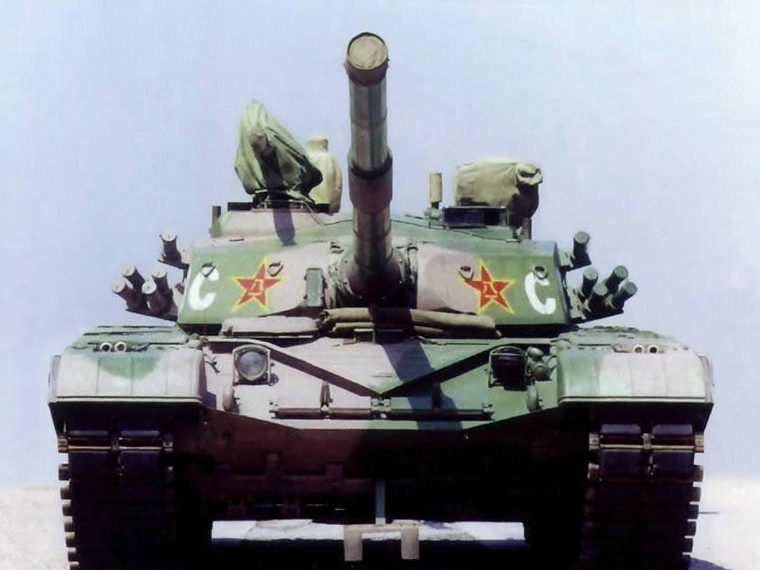Benjamin Lai is an expert on the modern Chinese military and author of The Dragon’s Teeth. In this blog, he explains how China are using the arms trade to exert influence in world affairs and challenge the dominance of the United States.
For years, the word ‘Made in China’ has been synonymous with ‘cheap and nasty’. This could range from plastic toys to weaponry. In the past, Chinese weaponry was popular among countries who couldn’t afford top of the line western weaponry. Saddam and the Ayatollah were top clients for Chinese arms in the 1980s, but lining up at the checkout counter were the Pakistanis, Burmese, Thai, Bangladeshi, Albanian, and North Korean. They too love what China had to offer, which were basic and unsophisticated guns that were ‘value for money’. However, in the past decade, China has been able to accelerate its transition from a minor arms importer to become one of the top exporters. The success of Chinese weaponry is still based on ‘value for money’ but has moved up the ladder to become a much higher level of sophistication. Best of all, the Chinese will sell to anyone provided they can pay.

According to recent data by the Stockholm International Peace Research Institute, Chinese exports of major arms increased by 74% between 2012 and 2016, and its market share has risen from 3.8 to 6.2%, making it the world’s third-largest supplier in the world, after the United States and Russia. One factor which supports this increase is that the Chinese rarely put any political condition on any arms contract. In 2012-16, China delivered weaponry to 44 countries, with the bulk of the exports going to Pakistan, Bangladesh and Myanmar. Chinese weaponry is a favourite of Africa, with two-thirds of all African countries now using Chinese weapons. 73% of Bangladeshi and 86% of Pakistani weaponry come from China. The second biggest buyers were the Africans, accounting for 22% of the sales. The increase in quantity is also matched by the rise in quality. In 2016 the Chinese sold the HQ-9 surface-to-air missile systems to Turkmenistan. HQ-9 is China’s answer to the American Patriot missile.
China’s manufacturing capability has also risen. In the last 10 years, China becomes less and less dependent on arms imports recording a drop of 11% in the last 4 years. Until the emergence of the WS-10X jet engines, China was highly dependent on Soviet aero engines like the Russian made Al-31FN and RD-33 engines used on the J-10 and FC-1 fighters, respectively. From 2012-16, aircraft engines accounted for 30% of China’s arms imports, delivered from Russia (57%), Ukraine (16%), and France (15%), with the latter mainly for its helicopters.

To boost arms development, for the first time the Chinese supply of weaponry will be open to selected members of the private sector. In addition, the private sector will be allowed to participate in the provision of logistic services. SF-Express, China’s answer to DHL, will now be able to use its drones to deliver supplies to remote observation posts along its borders. Previously soldiers have to hump heavy provision laden backpacks on a daily basis to ensure basic amenities such as food, fuel and water can be maintained.
By narrowing the technological gaps with leading Russian and Western suppliers, China has been able to enter new markets with new generation military technologies, including Saudi Arabia, Morocco, Venezuela, Ecuador, Peru, Mexico, Nigeria, Malaysia, Philippines, Kenya, Thailand, Indonesia, and Kazakhstan. To the ex-Communist countries like Chad and Sudan, China is repositioning herself as an alternative to Russian arms exports, but in other traditional pro-western countries buying Chinese arms is seen as a means to counterbalance the influence of Western powers. Chinese defence contractors compete on price while providing greater flexibility when negotiating the financial terms of arms contracts.
Like America and other countries who actively sell arms around the world, arms exports act as an instrument for foreign policy influence. By supplying arms, China can create strategic dependencies in areas that are vital to the national interests, such as around the South China Seas. China’s recent success in exporting arms to Thailand (S26T submarines) and long-term US allies, such as the Philippines, may in the long-term disrupt traditional strategic linkages with the United States. In reserve mode, these countries may also seek an alternative source of supply to lessen its dependency on Western technology.
Arms sales, remember, are about making money, and lots of it. Alfred Nobel made so much money from wars that he had to give his wealth away. Although 69% of Boeing revenue comes from its civil division, it however only contributes to 54% of the company’s profit.
Because many of the Chinese weapon makers are state-owned enterprises and do not have to disclose their financial data to the public, we may never know how profitable the Chinese arms industries are. On the east side of Beijing is Poly Theatre, one of the top theatres for the high arts. It was built and paid for by the Poly Group, whose subsidiary Poly technologies made huge amounts of money from selling to both sides of the Iran-Iraq war during the 1980s. So next time you watch Aida or listen to Lang Lang piano concert in Beijing, remember who paid for your seats in the first place.


 Follow
Follow